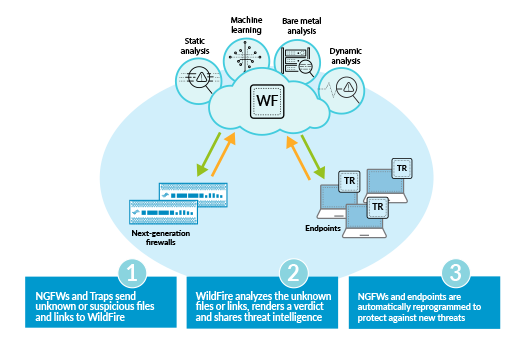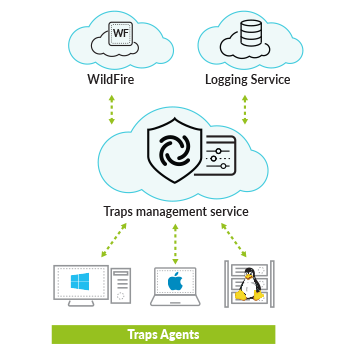
Minimize endpoint infections
Effective prevention from malware, exploits and ransomware requires an approach that protects against all three. Traps puts multiple methods of protection at critical phases of an attack lifecycle to prevent the execution of malicious programs and stop the exploitation of legitimate applications.
Automatically Convert Threat Intelligence Into Prevention
Traps continuously exchanges threat intelligence with the WildFire® threat analysis service, with more than 23,000 enterprise, government and service provider customers contributing to the collective immunity of all other users. Traps uses this intelligence to automatically reprogram itself to prevent malware on the endpoint, in the network or in a SaaS application. This all but eliminates the opportunity for an attacker to use unknown and advanced malware to infect a system.
Simple cloud-based management
With the Traps management service, a cloud-based endpoint security service, you save the time and cost of having to build out your own global security infrastructure. Deployment is simple and fast, requiring no server licenses, databases or other infrastructure to get started.
Intuitive user experience
Traps provides an intuitive interface that makes it easy to manage policies and events, and accelerate incident response – helping to minimize the operational challenges associated with protecting your endpoints. From the Traps management service web console, you can manage the endpoint security policy, review security events as they occur, and perform additional analysis of associated logs.
Lightweight, non-disruptive agent
The Traps agent enforces your security policy on the endpoint and reports when it detects a threat. The Traps endpoint agent consists of various drivers and services yet requires minimal memory and CPU usage to ensure a non-disruptive user experience. Following its deployment, system administrators have complete control over all Traps agents in the environment through the Traps management service.


